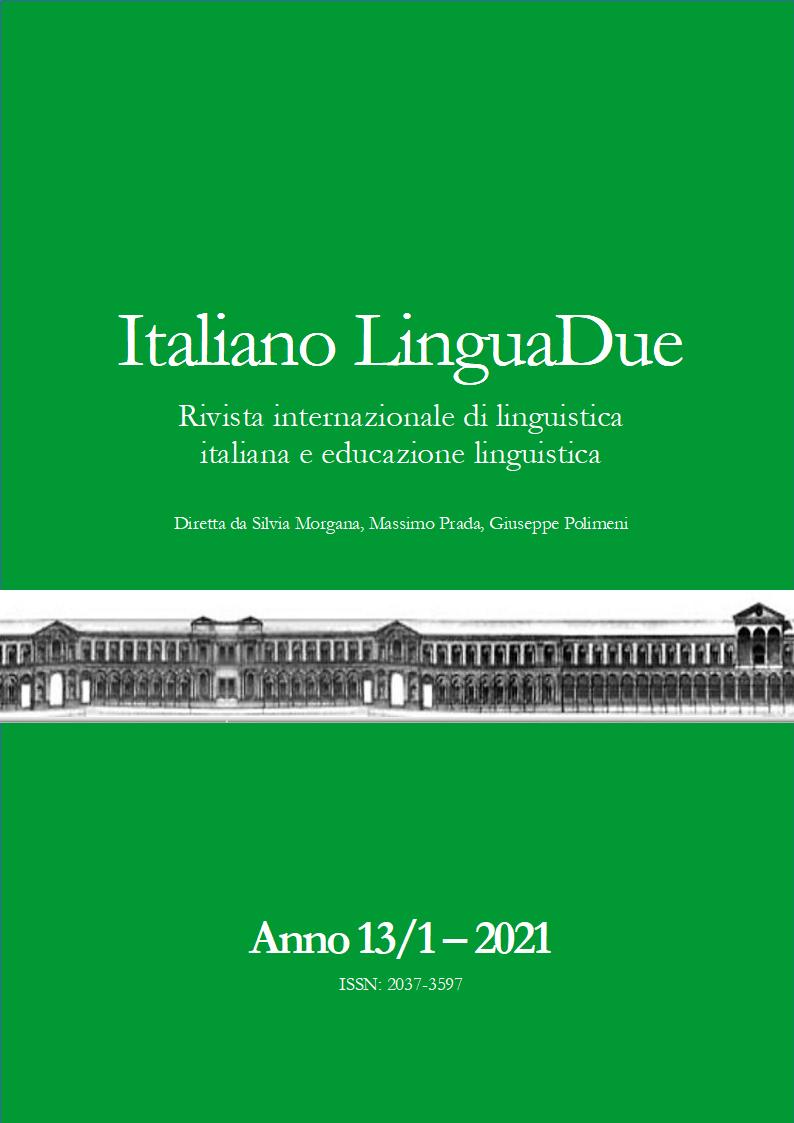IL GERUNDIO NELL’APPRENDIMENTO E INSEGNAMENTO DELL’ITALIANO L2 A STUDENTI IN SCAMBIO E INTERNAZIONALI
DOI:
https://doi.org/10.13130/2037-3597/15869Abstract
Il presente contributo analizza l’uso che fanno del gerundio studenti universitari che apprendono l’italiano L2 di livello intermedio-avanzato nelle loro produzioni scritte. Gli studi sull’acquisizione del gerundio nell’italiano indagano infatti soprattutto le prime fasi dell’acquisizione e sono compiuti su un corpus di testi ridotto e prodotto per lo più da apprendenti non europei. Studenti europei scolarizzati come gli Erasmus tendono invece ad usare il gerundio fin dai primi livelli di apprendimento, ma spesso estendono all’italiano costrutti esistenti nelle loro lingue madri o in altre seconde lingue. L’italiano moderno presenta infatti particolari restrizioni nell’uso del gerundio, le quali, assieme ad altre sue caratteristiche interne, lo rendono una forma complessa da dominare. La ricerca conferma le tappe acquisizionali già individuate negli studi condotti da Giacalone Ramat, ossia gerundio nella perifrasi progressiva > gerundio di predicato > gerundio di frase, ma rivela che alcuni gerundi non canonici vengono mantenuti fino a livelli molto avanzati. Una volta analizzato l’uso che gli studenti fanno del gerundio, vengono introdotte alcune proposte didattiche per suddividere l’insegnamento di tale modo verbale in diverse tappe, conformi alle sequenze di acquisizione ed attente ad evidenziare e correggere eventuali interferenze.
The gerund in learning and teaching Italian L2 to exchange and international students
This paper analyzes the use of the gerund by university students learning Italian L2 at an intermediate-advanced level in their written productions. Studies on the acquisition of the gerund in Italian mainly investigate the first phases of acquisition and are carried out on a reduced corpus of texts produced mostly by non-European learners. On the other hand, European-schooled learners, such as Erasmus students, tend to use the gerund from the first levels of learning, but often extend constructs existing in their mother tongues or other second languages to Italian. Modern Italian presents particular restrictions in the use of the gerund, which, together with other internal characteristics, make it a complex form to master. The research confirms the acquisitional stages already identified in the studies conducted by Giacalone Ramat, i.e. gerund in progressive periphrasis > predicate gerunds > sentence gerunds, while revealing that some non-canonical gerunds are maintained up to very advanced levels. Once the students' use of the gerund has been analyzed, some didactic proposals to divide the teaching of this verbal mode into different stages are introduced, in accordance with the acquisition sequences and careful to highlight and correct any interferences.




